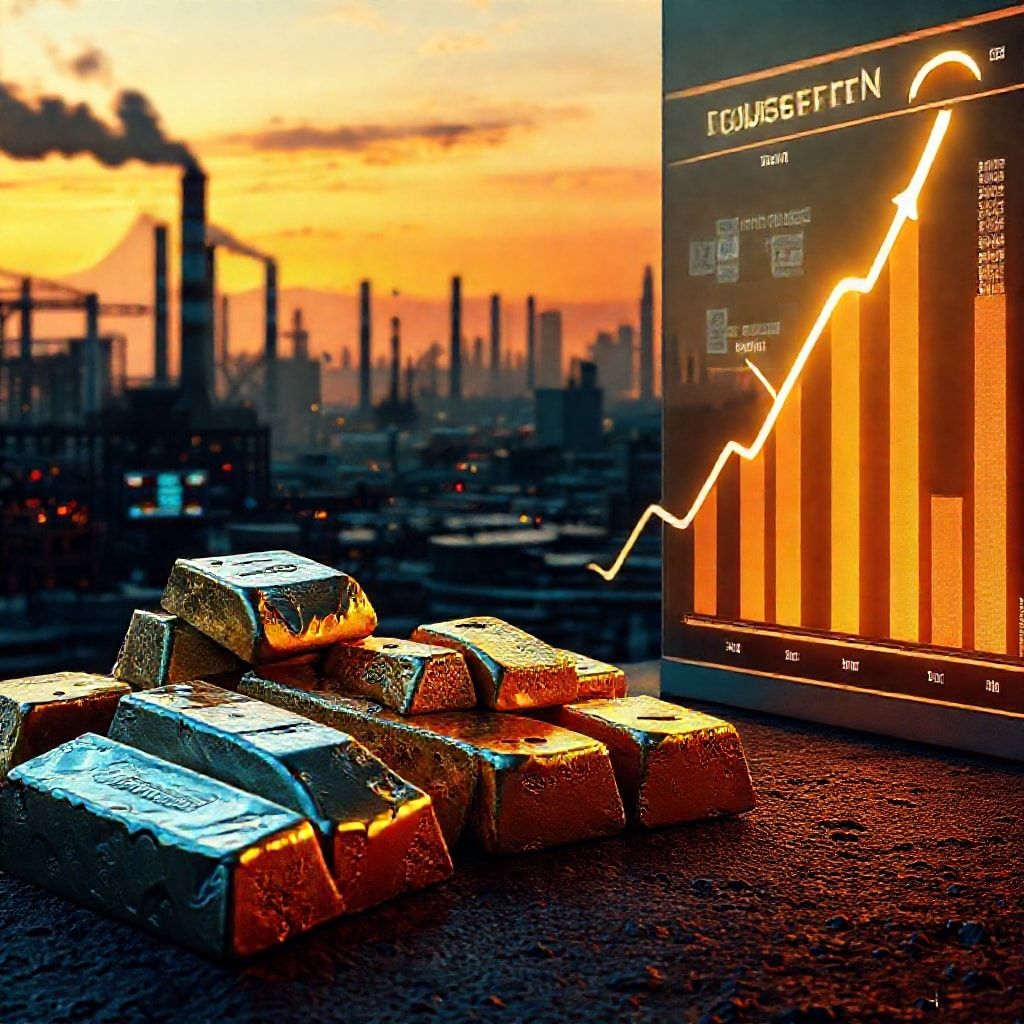Why do metal futures often rise during periods of high inflation?
Why Do Metal Futures Often Rise During Periods of High Inflation?
Introduction
When prices climb, traders start hunting for tangible hedges. Metals—copper, nickel, aluminum, gold—often rise with inflation, not just because they’re tradable assets but because they sit at the crossroads of production costs, demand for infrastructure, and monetary expectations. This piece breaks down why metal futures tend to strength-train in hot inflation, offers practical trading angles across asset classes, and checks in on DeFi and AI-driven futures as the landscape evolves.

Inflation, hedges, and metal fundamentals
- Real asset appeal: Metals are physical, finite resources. As fiat loses purchasing power, these assets can preserve value when cash and bonds wobble.
- Production costs and bottlenecks: Inflation lifts energy and mining costs, which can compress supply or push marginal costs up, nudging futures higher.
- Industrial demand and green mandates: Copper and nickel tie directly to infrastructure and EV supply chains; as governments invest, metals shoulder more demand pressure even amid price swings.
- Safe-haven tilt for some metals: Gold often acts as a monetary hedge, while base metals ride on growth expectations. The mix shifts with policy signals and commodity-specific news.
Market mechanics: carry, curves, and expectations
- Curve dynamics: The shape of the futures curve reflects storage costs, financing, and near-term supply/demand surprises. In inflationary climates, higher carry costs can lift longer-dated contracts if inflation expectations stay elevated.
- Currency and rates: A rising inflation environment often means policymakers tighten. Higher interest rates lift the cost of carry and can push futures higher, but shifts in the dollar’s value add another layer of complexity for USD-denominated prices.
- Contango vs backwardation: When near-term supply tightens, backwardation can emerge, keeping front-month prices strong. If storage and financing dominate, contango can still trend higher in a rising-price regime.
Trading in a multi-asset world
- Across assets: Traders mix metal futures with forex, equities, crypto, indices, options, and other commodities to capture inflation-sensitive bets and diversify risk.
- Practical angles: Basis trades (cooling price differences between cash and futures), calendar spreads, and hedged commodity exposures can reduce single-asset risk while keeping inflation hedging intact.
- A live example: During periods of inflation surprise, a copper position may strengthen as EV demand grows, while a complementary gold position provides a separate inflation hedge, balancing portfolio risk.
Web3, DeFi, and on-chain dynamics
- Tokenized commodities and on-chain access: Some platforms experiment with on-chain price discovery and tokenized exposure to metals, offering faster settlement or cross-border access.
- Risks to watch: Oracle reliability, smart contract risk, liquidity fragmentation, and evolving regulations can all impact on-chain metal exposure.
- Decentralized finance today: DeFi can unlock diversified, cross-asset strategies, but traders must navigate security, custody, and compliance considerations.
Risk management and leverage strategies
- Keep it measured: Position sizing and diversified metal exposure help manage idiosyncratic shocks. Aiming for sensible risk per trade and respecting margin calls matters.
- Use hedges and options: Calendar spreads or option overlays can limit downside while preserving inflation upside potential.
- Leverage with care: Futures leverage is powerful but amplifies moves. Pair disciplined stops with predictable risk controls rather than chasing large directional bets.
Future trends: smart contracts, AI, and a changing landscape
- Smart contracts and automation: Automated pricing, order execution, and risk controls on-chain could streamline futures trading and collateral management.
- AI-driven trading: Pattern recognition, volatility forecasting, and risk monitoring may enhance decision speed, but transparency and explainability remain key.
- Challenges ahead: Regulation, liquidity fragmentation, and the need for robust oracle networks will shape how quickly DeFi and AI-powered metal trading scale.
Slogans to keep in mind
- Inflation-proof your portfolio with real assets.
- Metals live at the crossroads of production and policy—trade what you see, not what you fear.
- Move with the curve, hedge with flexibility, and let data lead the way.
Closing thought
In inflationary times, metal futures reflect a blend of tangible demand, cost pressures, and monetary expectations. By combining sensible risk controls, cross-asset strategies, and a wary eye on evolving DeFi and AI tools, traders can navigate the turbulence while keeping a clear view of the long-term role metals play in a diversified portfolio.